Blog Posts Tagged Wave Optics Module
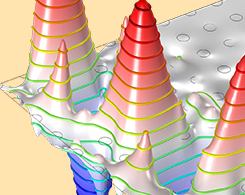
Engineering the Flow of Light Using Photonic Crystals
Did you know that the discovery of photonic crystals in 1980 came about because of an attempt to reduce the losses in semiconductor lasers in a specific frequency range?

Keynote Video: Improving Synchrotron Light Sources with Applications
For synchrotron light sources, brighter is better: RadiaSoft LLC creates and deploys wave optics simulation applications to design improved vacuum chambers for a synchrotron upgrade project.
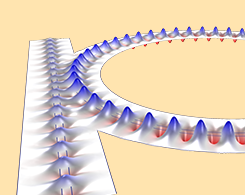
Calculating the Spectral Properties of an Optical Ring Resonator
The effect of a “whispering gallery” can be observed (a similar way) in another field of science entirely: light waves traveling in an optical ring resonator.

The Nonparaxial Gaussian Beam Formula for Simulating Wave Optics
Here’s your introduction to the nonparaxial gaussian beam formula, which is used for simulating wave optics problems in COMSOL Multiphysics®.

How to Model Linear and Nonlinear Optics in the COMSOL® Software
See how to model the Kerr effect, and other linear and nonlinear optical phenomena, using the Wave Optics Module and COMSOL Multiphysics®.
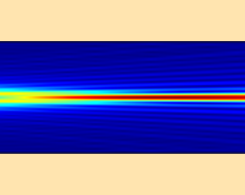
How to Use the Beam Envelope Method for Wave Optics Simulations
In order to simulate optically large optical systems, you need to solve for Maxwell’s equations, which requires a fine mesh and a lot of computational energy. Enter the beam envelope method.
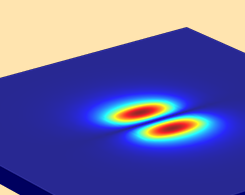
How to Model Optical Anisotropic Media with COMSOL Multiphysics®
Erasmus Bartholinus first observed the optical effect of birefringence in 1669. Today, you can observe this effect with a specialized modeling approach for optical anisotropic media.
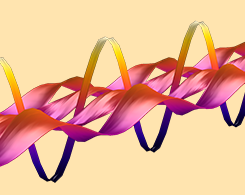
Silicon Photonics: Designing and Prototyping Silicon Waveguides
John Tyndall tried to control the most visible form of energy, light, using 2 buckets and some water. Today, there is a more advanced device for this purpose: a silicon waveguide.
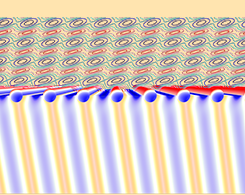
How to Model the Optical Properties of Rough Surfaces
We develop a computational model for calculating the optical properties of rough surfaces, such as incident light on a dielectric material with random variations in height and thickness.
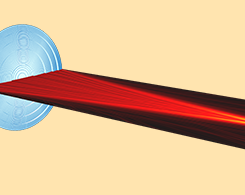
How to Implement the Fourier Transformation from Computed Solutions
In this wave optics demonstration, learn how to implement the Fourier transformation for computed solutions, using the example of an electromagnetic simulation of a Fresnel lens.
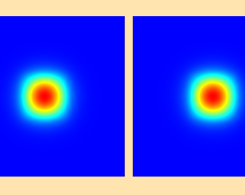
Improving the Design of Monolithically Integrated Magneto-Optic Routers
Magneto-optic (MO) routers are an efficient alternative to electro-optic (EO) routers for communication systems. Learn about a modeling approach used by researchers to improve MO router designs.
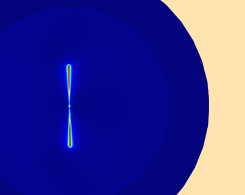
How to Couple a Full-Wave Simulation to a Ray-Tracing Simulation
Learn how to couple full-wave and ray-tracing simulations in a model with a nonhomogenous domain around the antenna. Part 4 of a series on multiscale modeling in high-frequency electromagnetics.

Keynote Video: Solving 2 Transport Process Problems with Simulation
In a keynote presentation from the COMSOL Conference 2016 Boston, Carl Meinhart from the University of California, Santa Barbara and Numerical Design discusses simulating transport processes.
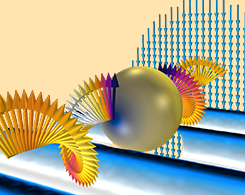
How to Couple Radiating and Receiving Antennas in Your Simulations
Learn how to couple radiating and receiving antennas in your simulations by using the scattered field formulation. Part 3 of a series on multiscale modeling in high-frequency electromagnetics.
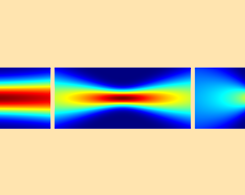
Understanding the Paraxial Gaussian Beam Formula
The paraxial Gaussian beam formula can be used to describe the Gaussian beam. We go over the theory behind this mathematical formula, as well as its limitations.
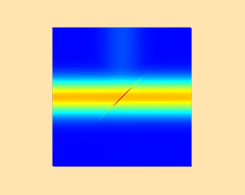
Study the Design of a Polarizing Beam Splitter with an App
Creating a numerical modeling app offers you a more efficient approach to analyzing and optimizing the design of optical devices. See an example of a polarizing beam splitter design app here.
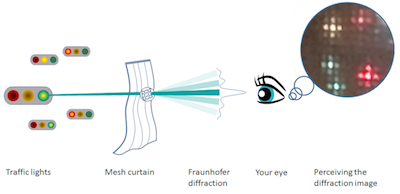
How to Implement the Fourier Transformation in COMSOL Multiphysics
See how to Fourier transform the electromagnetic field amplitude at the lens entrance in COMSOL Multiphysics® with a Fraunhofer diffraction example.

Comparing Two Interfaces for High-Frequency Modeling
When it comes to high-frequency electromagnetics modeling, which interface is better? We compare the Electromagnetic Waves, Frequency Domain and Electromagnetic Waves, Beam Envelopes interfaces.

How to Simulate a Holographic Page Data Storage System
As a follow-up to our blog post on modeling bit-by-bit holographic data storage, we demonstrate how to simulate a holographic page data storage system. Part 2 of 2.
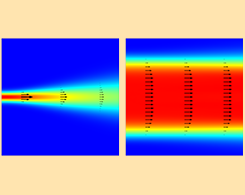
Simulating Holographic Data Storage in COMSOL Multiphysics
Get a demonstration of how to use COMSOL Multiphysics® to simulate holograms in a wide spectrum of optical and numerical techniques. Part 1 of a 2-part series.
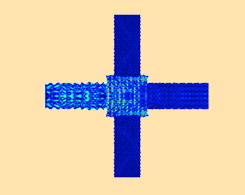
Modeling Phononic Band Gap Materials and Structures
A guest blogger from Veryst Engineering, a COMSOL Certified Consultant, shares simulation research designed to optimize band gaps for phononic crystals.
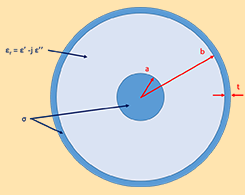
Model Cables and Transmission Lines in COMSOL Multiphysics
Learn how to compute the parameters of a coaxial cable from a COMSOL Multiphysics® simulation of the electromagnetic fields.

App: Measuring the Diffraction Efficiency of a Wire Grating
We go over the features of the Plasmonic Wire Grating Analyzer demo app, which you can use as inspiration to build your own apps for more efficient wave optics and photonics simulation.
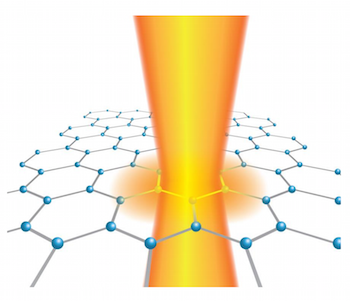
Should We Model Graphene as a 2D Sheet or Thin 3D Volume?
Graphene is a 2D sheet of carbon atoms that is 1 atomic layer thick. However, is graphene actually 2D or is it just incredibly thin, like a very fine piece of paper? How should it be modeled?
